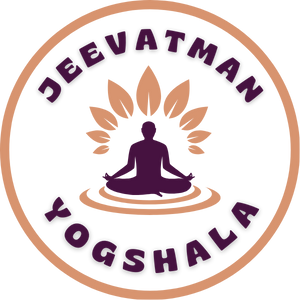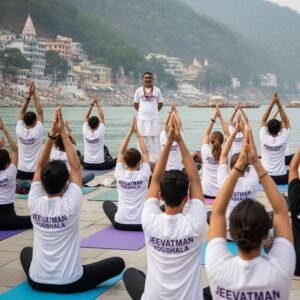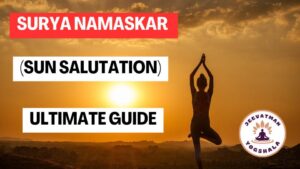In this fast-paced world, there are days when your mind feels like a storm you can’t stop. When everything around us feels too much, and the inside of us gets louder than the outside. Some people carry quiet storms of anxiety, sadness, fear, or simply a heaviness they can’t name.
During these moments, the healing doesn’t always come in big leaps. Sometimes, it starts with a breath. A stretch. A still moment on the mat. This is where yoga begins to gently open the door.
The Mind Today: Overstimulated, Underheld
The world we live in celebrates productivity but rarely pauses for presence. Many of us are constantly connected yet deeply lonely. Sleepless nights, racing thoughts, tight chests – we brush them aside, calling it “normal stress.”
But it is not normal stress. A rise in mental health struggles like depression, anxiety, burnout, and emotional fatigue is real. And while therapy and medication can be life-changing tools, sometimes we also need something that reconnects us, not just to our minds, but to our inner world and our breath.
At Jeevatman Yogshala, a Yoga school in Rishikesh, we meet students every month who don’t just come to train; they come to heal.
What Yoga Does For The Mind
Most people first meet yoga through physical postures (Asana). And yes, there is no denying that movement is medicine. But what heals mental health challenges isn’t just the shape you make. Mastering poses is not the only thing that yoga offers. Yogic wisdom at its heart is about creating space. Space in your inner world, your body, and your breath. Yoga for mental health is not something loud or extreme. It is subtle. Still. Soft. Sometimes that softness is exactly what the nervous system has been craving. Here’s how it helps:
- Regulates the Nervous system: Yoga calms the “fight or flight” response. Slow breathing practices help your body reach to rest and recovery.
- Releases Stored Tension: Gentle asanas help release tightness from the hips, shoulders, and jaw, a common area where emotional stress hides.
- Enhances Mood: Breathwork and Asana Practice release certain chemicals into your body that boost your mood instantly. Some studies show yoga can be as effective as antidepressants for mild depression.
- Gently Pulls You Back to the Present: Yoga helps you break the loop of overthinking through breath, movement, and mindfulness. It shifts your focus from ‘what if’ to ‘what is.’
Practices That Support Mental Health
You don’t need to do intense flows or perfect poses. When your mind is struggling, less is often more. These practices are gentle yet powerful:
- Pranayama (breathwork) to Rewire the Nervous System
The bridge between body and mind is breath. When we breathe consciously, we shift out of survival mode and into calm. Simple breathing practices activate the parasympathetic nervous system – the “rest and digest” response. This is where healing begins. At Jeevatman, we teach these practices in our Yoga Teacher Training Courses because they are the foundation for mental clarity and emotional balance.
- Nadi Shodhana (Alternate nostril breathing): This practicehelps you balance both the left and the right brain, helping you with overthinking and anxiety.
- Deep Belly Breathing: Inhale slowly through your nose, let the belly rise. Exhale gently. Repeat 5 minutes. This alone is a practice.
- Bhrahmari (Humming Bee Breath): Vibrations created by the humming sound calm the mind and soothe the nervous system.
- Asanas to Declutter Your Emotions
Certain yoga postures are naturally calming. Forward bends, gentle inversions, or simply lying soothe the overstimulated mind. We always remind students: Yoga isn’t about what you can do but about what you can feel. This is especially true when practicing yoga for Mental Health Issues.
A few asanas/poses that are easy and safe to follow.
- Marjaryasana-Bitilasana (Cat-Cow): Gentle spinal movement. Inhale arch, exhale round. Releases tension.
- Balasana (Child Pose): This asana tells your nervous system that you are safe. Surrender yourself and breathe into the pose.
- Viparita Karani (Lega Up the Wall): Reduces anxiety and helps with sleep. You can even do it in bed.
- Supine Twist: Lie on your back, knees to one side. Releases lower back and emotional tension.
- Yoga Nidra – The Yogic Sleep That Heals
The yogic sleep, or yog nidra, is a deep relaxation practice that brings the mind into an in-between state of wakefulness and sleep. It is incredibly effective for mental health cases of insomnia, PTSD, anxiety, or emotional burnout. In that stillness, the nervous system recalibrates, and the mind begins to feel safe again.
- Mantra Chanting – Vibration as Medicine
At times, it happens that our inner noise is too loud for silence. That’s where the mantra comes in. Chanting ancient sounds like OM, So Hum, or longer Sanskrit mantras creates powerful vibrational medicine. It helps you clear the mental fog, shift emotional states, and bring you into deep presence. More than a ritual, the mantra becomes a rhythm. A way to return to your centre, word by word, breath by breath. You feel each mantra chant into your chest, your throat, your soul.
- Meditation to Watch Without Reacting
One of the most powerful things in mental health care is: You are not your thoughts. And you get to know this through meditation. Consistent practice of simple meditation creates space between stimulus and response. It could be any kind of meditation, an active meditation, a passive meditation, a sound meditation, or a guided meditation. With time, this practice becomes your anchor. Not just during a meditation class, but in life.
What to Look for in a Yoga Class or Teacher (Especially for Mental Health)
Not all yoga classes are suitable when you’re emotionally vulnerable. Here’s what matters:
- Small, quiet settings (not crowded gyms or loud music)
- Teachers who ask how you feel, not how flexible you are
- Spaces that feel emotionally safe, not competitive
- Classes that include breathwork, meditation, or sound healing
At Jeevatman Yogshala in Rishikesh, we create spaces like this. Where students are met with softness, not pressure. Many of our students come not just for physical fitness but for emotional restoration.
Helpful Tips Before You Start
- Don’t force yourself to ‘be positive.’ Let yoga meet you as you are.
- As a beginner, avoid fast-paced power yoga or hot yoga. Your systems could feel overstimulated with these practices.
- Your practice is a ritual to you: light a candle, wear comfortable clothes, play calming music.
- Smallest of the victories should be celebrated. A 10-minute breath practice counts.
Common Questions
- I can’t sit still. Will yoga still work for me?
- Yes, it will work. Many people with anxiety or trauma feel this way. Start with movement-based practices like Cat-Cow or gentle walking meditations before stillness.
- How soon will I feel better?
- Everyone is different. Some feel lighter after one class, others take weeks. The thing that matters is that you show up.
- Will I need to talk about my feelings?
- Most definitely not. Yoga isn’t a therapy. Yoga is just deeply therapeutic. You don’t need to say anything, share anything; your body already knows how to release all the traumas.
In short: Your First Steps
- Start with Pranayama or a simple breathing practice. (Belly Breathing, alternate nostril breathing, humming bee breath)
- Combine your practice with gentle yoga asanas. (cat-cow, child pose, legs up the wall)
- Practice Yoga Nidra or guided relaxation when you feel mentally exhausted.
- Choose non-competitive spaces and teachers.
- Go slow. It is not a race.
You don’t have to do this alone. Whether you join a class or yoga retreat at Jeevatman Yogshala, start from your bedroom, or breathe in silence, your healing has already begun.
You are doing better than you think.
And YOGA will be here to always guide you and walk with you.








